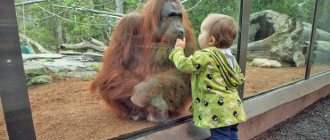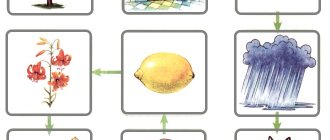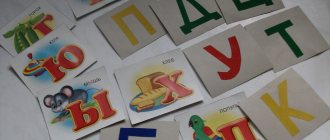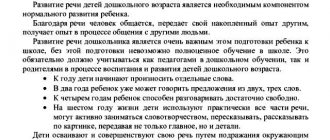Looking at the author's speech therapy manuals, you realize that you can make many games for your children yourself. To do this, you do not need to have any special talents or skills as an artist. The main thing is to know the principle of working with this material. Pictures for it can be cut out from old children's books or magazines, or use scrap and scrap material.
In the article, we will look at examples of making a speech therapy manual with your own hands, we will tell you how to work with such material, what exercises will help children pronounce sounds correctly and learn to determine their place in a word.
Speech therapy games will also help kindergarten teachers. They can be used in various classes, for example, on speech development, when getting acquainted with the outside world. You can play a word game with your children during a walk or after a nap. They contribute to the development of correct articulation, the development of clear pronunciation of sounds in words, phonemic perception, the ability to determine the place of a sound in a word, etc.
Breathing exercises
To correct the pronunciation of sounds, speech therapists practice breathing exercises. Exercises allow you to strengthen the air stream, direct the force of the air to the right place, and increase the duration of blowing. At first, the exercises are performed simply with the lips, without puffing out the cheeks. You need to try to get a stream of air onto the tongue. This is necessary when working on hissing and whistling sounds - sh, zh, shch, ch, s, z.
Such exercises are designed to increase air ventilation in the lungs, so before starting exercise, be sure to ventilate the room or perform them in the fresh air. Repeated deep breathing may make your child dizzy, so take breaks between exercises to rest. The duration of breathing exercises should be increased gradually, starting with short exercises.
For such classes, speech therapy aids are easy to make with your own hands. In addition to blowing air through a straw or inflating a balloon, you can make a bright toy for your child using a cardboard toilet paper tube, strips of colored paper or satin ribbons. From such materials you can easily make an octopus with pom-pom eyes. For beauty, cover the tube with colored paper. When you blow air, strips of paper or tape will develop in the air, which the child will really like. You can attach them with a regular stationery stapler.
"Sound Chains"
It is very difficult for children to distinguish between paired sounds (voiceless and voiced), for example, s - z or sh - zh. To make this process easier, you can make a speech therapy manual with your own hands, as in the photo below. A large sheet of cardboard depicts two bunnies of different sizes. One collects words that begin with voiced sounds, the other - with unvoiced ones. You can attach the necessary pairs of letters with buttons or make a transparent pocket to insert them there.
Children are given a set of cards with pictures. All objects begin with these sounds. The child takes turns taking a card and saying out loud the name of the depicted object. Having correctly identified the first sound, he looks for the corresponding letter and strings the picture on a cord that stretches from it. So you need to distribute all the pictures in chains, laying them next to each other.
DIY educational aids: simple and effective
The comprehensive development of a child involves not only targeted learning, but also spontaneous knowledge, interesting stimuli that encourage imagination and motivation for what seemed impossible just yesterday. In other words, the more a child is interested in something, the more he will want to study it and develop independently. Our task is to stimulate his interest. However, it is not advisable to solve the issue of new incentives by constantly purchasing new toys. But what about the many games with old, but proven toys? What about homemade toys? But what about games with ordinary objects, such as watches, screws, rubber bands, etc.?
This is exactly what we will talk about - about manuals, that is, materials for development that you can make with your own hands. In addition, this article will help you take a fresh look at ordinary household things and warm up your imagination.
We bring to your attention benefits that both children and their parents like!
SENSOR BOX
The photo shows a variant of a container filled with cereals with compartments. You can make a box with your own hands, take a candy box or an ice tray - there are many options. The purpose of such a box is to awaken interest, develop fine motor skills, attention and perception, develop the ability to classify and analyze (arrange by color, list, quantity, etc.), as well as develop the skills of frugality and responsibility. Scattered - you have to collect it. The games change depending on the content. For a little housewife, this could be, for example, games with drawing, cooking and storing treasures, and for a cheerful adventurer - her own treasure chest or a work container for tools (like dad), etc.
RATTLING BOTTLES
Various fillings are poured or poured into small bottles: cereals, jewelry, natural materials, water, etc. You can create music, splash out energy by spontaneously playing such “maracas,” and also develop auditory and tactile perception. Do empty jars sound the same if one is closed with a lid and the other is open? What sound will it make if you knock with sticks and fingers? These and many other games are possible with the help of rattle bottles.
COUNTING STICKS
A fairly accessible and necessary guide for the development of many skills (joint games, counting, coordination of movements, etc.). Take sushi sticks (after removing the splinters and roughness) and number them. Now you have in your arsenal the required number of convenient sticks with which you can pick up objects, build something, and even draw! After all, the main task of our benefits is to develop the child in different ways and stimulate the development of imagination. So, if suddenly your child starts banging sticks instead of counting, pretending to be a musician, smile and play orchestra together! Of course, later you can count the sticks and learn the quantity, but the child will be happy if you play with him in a spontaneous game.
BOX WITH SURPRISE
One of the author's favorite books. A box is taken and an object is hidden in it. The task is to guess together with the child, without opening the box for as long as possible, what is inside. The contents, of course, can be changed, the number of boxes can be increased (or replaced with bags). This exercise not only allows you to reason and fantasize, but also helps to discuss with your child the topics “appearance is not important, content is important”, “every person can contain a unique beauty that you just have to want to see”, “every simple object can contain a surprise” "etc.
DRAWN CARDS
Now there are many sets of cards for different purposes. We invite you and your child to draw your own set of cards - imaginary friends, favorite clothes, animals, emotions, etc. It is advisable to attach these cards with tape to cardboard to increase their strength and durability. Find a card, come up with a fairy tale from randomly dropped cards, find similar ones and much more you can come up with together!
POCKETS
A convenient option for storing small items - fabric pockets are sewn onto thick fabric and hung on a wall or cabinet. Pockets can be of different colors and geometric shapes, and can also be closed or open. Thus, we have both an original tool for studying (shapes, colors, finding objects, etc.), and a convenient option for storing household items (beads, jewelry, stationery, pieces of paper, etc.). Also, with the help of this manual, you can develop spatial-temporal orientation skills - we mean games such as: “remember which pocket you just put your toy in; please take out the pen you put down yesterday”, “bottom-up, right-left”, etc.
BAGS
Hand-sewn bags for storing natural materials are a unique field of sensory stimuli (to touch and guess what is in the bag), as well as a way to conveniently store the gifts of nature. Sew bags together with your child, discuss their number and size (“our bags will be in your drawer, and let’s choose what size they will be. Look - if we make a bag for acorns that is too large, then there will be no room left for pebbles and chestnuts. Do you agree? Suggest how you want? "), together fill with various fillings (shells, acorns, beans, etc.) and play! This game also develops thrift skills, develops the sphere of sensation and perception, memory and imagination. The contents of the bags can also be used for crafts.
SENSORY CUSHIONS
Pillows with different fillings are sewn (sintepon, torn paper, cotton wool, etc.), and various objects are sewn or glued on the outside: sticks, threads, buttons, beads, etc. These pillows can be used for studying with your hands, for visual perception (examining, searching concrete), for fantasy (“each pillow is a world where magical creatures live who sleep in cotton wool and eat buttons”), and are also used as sensory paths - when the child is asked to walk along pillows folded in the form of a path. This massage track is useful for all ages, and individual pads can be connected to each other or simply placed side by side.
Inspiration to you!
Author: psychologist Marina Shamilevna Tuisheva
Developing articulation
It is difficult for preschool children to pronounce sounds correctly due to underdevelopment of the speech apparatus. The muscles are still weak, the tongue is difficult to listen to and does not have the necessary flexibility. If you don’t work with your baby, everything will end in tears. The child will not be able to speak correctly for a long time, which will cause ridicule from classmates in older preschool years. The articulatory apparatus can be trained as early as 2 or 3 years of age. This includes the larynx, jaw, lips and tongue.
There are a lot of exercises to develop the muscles of this system. The mother or teacher shows them to the child, and the baby repeats. It is advisable to do them in front of a mirror so that the position of the lips and tongue position can be seen. When working on certain sounds, you can make speech therapy aids for articulatory gymnastics.
This is an image of the whole face or just the mouth, where the lips are drawn in the correct position when pronouncing a sound. Visualization will help the child repeat the movement independently. It’s not difficult to draw such a tutorial; you can use your children’s favorite emoticons.
We make speech therapy games and manuals ourselves
When making speech therapy games with your own hands for preschoolers, you need to be sure that they are colorful and exciting for kids. The child likes to play, and the speech therapist must organize this in such a way that the violations are corrected.
Speech therapist works with a child
Aids for the formation of subject activity
Sometimes speech disorders are associated with insufficient development of fine motor skills or intellectual activity. You can create speech therapy aids with your own hands to correct such problems.
We are working on sensory skills: the game “Locks”
Important! The game "Locks" will help children develop the necessary qualities.
Before you start, you need to prepare several multi-colored zippers (at least 6 pieces of different colors). They are laid out horizontally, one under the other, in front of the child. The child is given various types of tasks:
- Find a castle of a certain color.
- Close or open one whose name contains a specific letter.
- Talk about your actions.
- Count out loud the castles of a certain color.
At the same time, speech skills and fine motor skills of hand movements develop.
Game "Put a butterfly on your path"
In this game, stripes (paths) are made from felt of certain colors. There must be at least six of them. Flat figures of butterflies made from cardboard must be placed on a path of a certain color. This may include the following tasks:
- Place a certain number of blue figures on the corresponding path.
- Count the number of butterflies out loud, indicating their color.
With each action, the child must describe what he is doing according to the instructions of the teacher.
“Sound clearings” for sound automation
For this game, draw a winding path on a piece of paper. At the beginning they place a dog, at the end - a booth. There are bones on the road that need to be collected. The baby leads the toy along the path, imitating its growl. When it is in the spaces between the bones, the child pronounces “r-r-r-r-r-r” long and with effort. He rests at the bone, making short and light “r” sounds. In this way, the pronunciation of this sound is automated.
Sound glade
Collecting an album of cards for the development of fine motor skills
Tasks for the development of children exist in a large number of options. It is advisable to collect them in an album, each page of which represents a separate task.
Speech therapy mat made of squares
If you make a rug with squares and attach small objects to each of them, then the kids can be given various tasks related to them. For example, they can choose objects of a certain color by counting and naming them.
Collecting pictures by topic to work on sounds
The child can describe the contents of pictures and make sentences related to them. Having collected a thematic collection, he will perform tasks related to individual pictures or their groups, describing his actions in words.
Homemade products for the development of fine motor skills from scrap materials
By making games and tasks for children with your own hands, you can help develop their intelligence and speech skills.
"Lacing"
For this type of game, you can print out the images and stick them on hard paper. At the same time, some of the details that need to be added are designed in such a way that the laces can be threaded in this place and a complete plot is obtained. For example, you can depict a cloud and prepare the holes so that the lace imitates raindrops.
Games for children 5 years old for speech development and advice for parents
Important! Various plots can be used. For example, lacing can represent the spokes of a bicycle or outline the desired contour.
Speech therapy walks
You can use a computer to work with children. To do this, just use a presentation program (for example, Microsoft PowerPoint). In this case, on the picture that is used to create the background, several images of objects are placed and sounds are attached to them. On this basis, you can create various speech therapy games. Here are some of them:
- The child touches several pictures and loudly pronounces the names of the objects. He chooses those that give the same sound. For example: “One Christmas tree, two Christmas trees.” To study adjectives, you can say: “One green Christmas tree, two green Christmas trees.”
- Invite your child to choose three items he likes from those offered and make sentences with each of them. For example, if he chose a fish, dishes and an apple, he can say: “The fish is swimming in the aquarium,” “Peter ate the apple,” and “Dad bought the dishes.”
- You can play the game "Greedy". To do this, the child selects several objects (for example, a Christmas tree, a cake) and says “My tree,” “My cake.” You can suggest a similar game “Don't be greedy”. Having chosen pictures with a hat and a bicycle, the kid says: “I gave everything away and I don’t have a bicycle, I don’t have a hat.”
Based on one or two pictures with pictures, you can come up with a large number of this type of speech therapy games.
Action
This category of homemade speech therapy aids for preschoolers includes labyrinths. They are drawn on a piece of paper. A simple labyrinth is created for the child, inside which a large number of objects are located. The child throws the dice and moves towards the goal, loudly and clearly pronouncing the names of the objects through which he passes. The drawings are selected according to such a scheme so that the game helps the baby master certain sounds. Usually several variants of such labyrinths are used.
Tactile pouch
For this didactic game you need to sew two types of bags:
- Opaque - you can’t see what’s inside, but you can feel it. They are made square with a side of no more than 10 centimeters.
- The transparent ones have one side made of plastic. To do this, you can use the material from which transparent files are made. The other side is made of fabric.
The bags are filled with various types of fillers so that they can be easily distinguished by touch. They must be paired. Each variety should be in one transparent and one opaque bag.
Pouches
Here are examples of games that can be played with children:
- First, examine the contents of one of the transparent bags. It is examined, felt and the contents described. Then they look for the same filler in an opaque bag.
- They look for the right material by touch. Then they point to a transparent bag with the same filling. Describe what they contain. As a result, you need to line up two rows. In this case, bags with the same contents should be located together.
Such activities develop visual and tactile analyzers and teach children to speak correctly.
Another DIY speech therapy game is used, in which several objects are placed in a bag. Children must touch what is there, take it out and describe it in words.
"Fun ABC"
This manual will be useful for speech therapy work and for learning letters. On a piece of cardboard on top, write large and small letters in large font. In our sample it is “D”. Then select pictures depicting objects for a given sound and stick them on the surface of the card.
You can make a tutorial together with your children so that the child can come up with words starting with this letter. If you don’t find the picture you need, you can always use the Internet and print its outlines on a printer. The child will help you color it with colored pencils. This is how all the letters of the alphabet are formatted. You can do the speech therapy game with your own hands, not all at once, but as you study a given letter. It will be easier for the child to remember it. In the next lesson, you can repeat the previous letter and work on the next one.
Topics for classes for speech therapists
When working with children, a speech therapist can take on many different topics. helping kids develop speech skills. Below are some of the most popular options.
Lesson topics for the preparatory group
It is important to use physical education minutes in every lesson and make it an exciting game for children.
Do-it-yourself didactic material for kindergarten
Theme "Professions"
During these classes, various specialties are considered, involving children in games and a variety of activities. They are given riddles related to the activities of adults. Children are given exercises that imitate the movements of workers.
Conducting a speech therapy lesson in the preparatory group on the topic “Professions”, children are taught to talk about various types of occupations of adults.
Various sounds and words are pronounced with children, they are taught to make facial movements expressing certain emotions.
Theme "Winter"
When a speech therapy lesson is held on the topic “Winter,” riddles are offered on the topics of winter weather and events related to this period. Conversations related to this time of year are held with children. Kids are asked to describe winter weather using different words. For example, “What the frost does / Pinches, bites.”
Theme "Transport"
The children are considered different types of transport and given tasks that relate to them. For example, kids look at cards with pictures and must determine which is the odd one out (pictured: a car, a train, an airplane and a pan). Children must explain their choice. You can do the exercise “The steamer is humming”, used in speech therapy.
Note! In this case, while exhaling with their mouth closed, children should pronounce the long sound “oo-oo-oo”.
Furniture theme
Boys and girls of preschool age are asked to name pieces of furniture located in the room. They are asked what different parts of a chair, table or cabinet are made of. A game can be used when the qualities of furniture are named, and the child must name the opposite property.
Theme "Indoor plants"
You can play the game "To". Children are told how to care for plants, and they must add the word “to” and say why exactly this should be done. The “Two and Five” game involves saying a sentence like “I have two cacti and five cacti” about various houseplants. Children with OHP are asked to say various sentences, talking about what the ladybug does. For example: “A ladybug flies over a flower.”
Registration of pure tongues
These manuals are often used by speech therapists and kindergarten teachers to train the correct pronunciation of a certain sound. This special exercise consists of two parts and is a short poem. The first line consists of repeating a syllable or two letters three times—the first is a vowel and the second is a consonant. This is a speech therapy exercise to develop articulation and automate the pronunciation of sounds. The second part is represented by a rhyming phrase that contains a given syllable or combination of letters.
To make it easier for your child to remember pure phrases and pronounce them faster, you can make a speech therapy game in the form of cards with your own hands. They can be small in the form of a table, as in the example in the article, or you can place each phrase separately on a large sheet of cardboard. This will be a demonstration material for group work. Write the text below in block letters to remind children of the content if anyone forgets it.
Tongue twisters in pictures
These are great exercises for developing speech sounds. They represent a small rhythmic text, usually with funny content. Since ancient times, they have been used for fun, as well as to improve the mobility of the organs of articulation. In addition to speech, tongue twisters improve attention and develop memory.
The sample speech therapy manual for children presented below allows you not only to pronounce tongue twisters, but also develops thinking and visual perception. Such tables can be drawn for each phrase. They are suitable for children of older preschool age.
Each picture corresponds to one word of the tongue twister. The first step in learning a phrase is to pronounce it clearly at a slow pace. As you memorize the phrase, it is pronounced faster and faster. The main thing is to monitor the clarity and intelligibility of the pronunciation of sounds in words. Funny pictures will help children remember the text faster, since their visual memory helps them with this. Draw tables schematically. You need to have the talent of an artist to make such a speech therapy manual with your own hands.
“Guess the sound in the word”
The following educational material is intended for children in the senior group of kindergarten. The child, looking at the first picture, must name the letter that the word begins with. What follows is a series of three images of objects. Having spoken their names out loud, the child must determine the presence of a given sound in these words.
On the manual, under each picture there is an empty circle where a check mark is placed if the given sound is present in the word. This exercise is very useful not only for developing pronunciation, but also for developing phonemic hearing and attention. You can draw the pictures yourself or cut them out from old books.
"Listen and choose correctly"
In this speech therapy game, children learn to clearly distinguish by ear the sounds in the names of the objects depicted in the manual. There are a number of words that differ in only one letter. Children often cannot distinguish them by sound.
These tables, which you can easily make yourself, will help your child understand the correct choice, listen more carefully to the spoken word, and recognize it in the pictures.
Games for distinguishing sounds in words
Do-it-yourself speech therapy games for preschoolers help teach children to distinguish sounds by ear, develop their attention, and expand their vocabulary.
- "Merry transformations of words" . The famous poem by A. Shibaev “The Letter Got Lost” is well suited for this game:
They say one fisherman
I caught a shoe in the river,
But then he
A crowbar caught the hook!
It is necessary to find the word that is lost and replace it with the appropriate one. Humorous drawings are also prepared for these quatrains.
- "Score a goal" . Football goals are drawn on paper, the bars represent the letters M and L. In the images of footballs, the vowels I, Y, O, E, I, A. We score a goal and form the words: mil, soap, mole, chalk, crumpled, small. You can play the game by reading these words:
- If you use a barbell to make an M, if you use a barbell to make an L, and score an I into the goal, it will be... The child names the resulting word. So all the letter-balls fall into the goal.
- "Rebus" . Solving puzzles develops a child's logic, thinking and speech. You can draw the puzzles yourself by encoding in them any word or tongue twister that uses the sound assigned to the child.
- "Sound replacement" . The speech therapist has a picture with a drawn object, he asks to replace the initial sound in the word. Barrel - daughter, point, hummock, night. You can replace sounds in other parts of the word. Goat - leather, bark, braid.
- "The Hidden Word" . Show subject pictures. The child names what is shown. In every word there is another one that is hidden from us. The speech therapist asks: “Can you find the word that is hidden?” A duck is a dot, a scythe is a wasp, a shelf is a floor, a pillar is a table, a wolf is an ox.
- Lotto and Domino games can be made together with children. Select and paste subject pictures onto cardboard. The preschooler pronounces the names of the objects shown on the cards.
These do-it-yourself speech therapy games are used to develop the ability to generalize, analyze, and teach you to be attentive.
"Sound Clock"
The next game is very similar to the previous version. The task is the same. Children must find paired words that differ in only one sound. The manual looks like a clock with hands mounted on a large cardboard circle. You can make a game out of plywood, then pasting it with a sheet of colored paper. Pictures of pairs of words are selected, for example, cancer - poppy, meadow - onion, T-shirt - nut, seagull - T-shirt, rose - goat, salt - moth, etc.
The child must arrange the arrows so that they point to a pair of similar words. You can make the manual double-sided by adding pictures and arrows on the back side of the circle.
“Read the intended word”
The child’s task in this game is to form the intended word by naming the first letters of the pictures in a row. This is an interesting game that is easy to make yourself.
When preparing for the production of this manual, you need to work in the opposite direction, that is, first think of a short word, and then select pictures that begin with its first letters. All that remains is to place them on the same line in a row. The photo above shows words consisting of five letters. If it is difficult for a child to master this game the first time, you can first come up with shorter words, for example, “wasp”, “cancer”, “nose”.
The article provides examples of speech therapy games and aids that can be done at home. They are fun to work with and quick and easy to do.
CHILDHOOD GUIDE
From work experience
Nikolaeva Svetlana Ivanovna, teacher-speech therapist, kindergarten No. 1, Nelidovo, Tver region.
We all know that correct speech is one of the most important conditions for successful personal development. The better a child’s speech is developed, the more complete his communication and interaction with adults and peers. The leading activity of children is play, so all teachers try to include various games in their work with children. Speech therapists are, of course, no exception.
As is known, the goal of speech therapy in kindergarten is the development of the entire speech system as a whole: the development of general speech activity, the accumulation of vocabulary, the development of physical and speech hearing, the development of the grammatical side of speech, training in word formation and inflection skills, the development of articulatory and fine motor skills, coherent speech and finally, pronunciation correction.
Speech therapy games allow children to: - solve mental and speech problems in a playful way; - develop the ability to pronounce words correctly; — learn grammatical rules, expand your vocabulary; — form a directed air stream; — develop fine motor skills and graphic skills; - develop mental processes closely related to the development of speech. Accordingly, the speech therapist should have a large number of different games at his disposal. When choosing games, the speech therapist teacher takes into account the age of the children, their psychophysical characteristics, the degree of complexity of the speech disorder, and the stage of speech therapy work . In practice, we encounter different children, various speech disorders, and we try to select the necessary games for each child individually. Our modern age is good because it provides us with a huge amount of different information, ready-made games, manuals and posters, but they do not always correspond to our wishes and expectations. Therefore, in my work I practice making various games with my own hands. Here, fantasy knows no bounds, ideas take on real forms, pictures are selected at your own discretion, design is optional, you can set the game the goals you need at the moment, and add new material at any time in the appropriate form and format of your game. Modern technology and materials help to decorate everything beautifully, colorfully and aesthetically. It's nice to work with manuals and games that you created and created yourself.
Games for developing fine motor skills. By paying due attention to the development of fine motor skills and subtle movements of the hands, we achieve certain goals: we develop finger plasticity, develop dexterity and flexibility, develop the ability to control our movements, and concentrate attention on one type of activity. Regular repetition of motor exercises for the fingers promotes the development of attention, thinking, memory, has a beneficial effect on the development of children's speech, the hands become mobile, which helps children quickly master writing skills.
Games for the development of speech breathing, the development of a targeted air stream. The formation of speech breathing involves, among other things, the production of an air stream, which is considered one of the necessary and significant conditions for producing sounds. The production of an air stream can be carried out before articulatory gymnastics or simultaneously with it, since the cheeks, lips, and tongue take an active part in the formation of the air stream.
Games for automation and differentiation of sounds. Exercises and games for automation (correct pronunciation of given sounds in syllables, words, phrasal and independent speech of the child) are used throughout the entire correctional work of the speech therapist with the child. This is difficult and inherently rather monotonous work, which requires constant attention from an adult and patience and perseverance from children. The child needs to repeat exercises, words, sentences with a certain sound a huge number of times. To diversify educational activities in this direction, I use a large number of games to automate sounds, the goals of which are the same, but the pictures and content are different.
Games for the development and activation of vocabulary. These games help develop children's active vocabulary, enrich the subject vocabulary, the vocabulary of adjectives, develop the ability to select actions for objects, develop the ability to identify and name parts of objects and objects, teach children to correlate objects with different characteristics.
Games for the formation of grammatical structure of speech. With the help of such games, one develops the ability to form plural nouns, diminutive forms of nouns using suffixes, and develops the skill of correctly using nouns in the accusative, genitive, instrumental cases, etc.
Word formation games. Speech therapy work is also aimed at the formation of word formation of nouns, verbs, adjectives with the help of prefixes, suffixes, by adding words and forming new ones. One of the tasks of a speech therapist teacher is to develop children’s ability to form relative adjectives from nouns, name objects, what material they are made of, teach children to relate the names of adult animals with the names of their babies, use these words in speech, form verbs from onomatopoeic words, adjectives from nouns using the suffixes –yan, –an, -ov, -ik, -schik, etc.
Games for the formation of inflections. To reinforce the inflection of nouns, verbs and adjectives, various games and play exercises are conducted with children with specific goals: agreement of nouns and adjectives in gender and number (Which? Which? Which?), the correct use in speech of nouns in different cases, singular and plural present tense verbs (What is he doing? What are they doing?), agreement of nouns with numerals, etc.
The use of games in the work of a practicing speech therapist is a prerequisite for the correction process. In my office there are a lot of games and aids, made by hand from paper, cardboard, waste and improvised materials, which solve various correctional and educational problems.
Homemade games are colorful and bright. They arouse children's interest and desire to work. A variety of games that pursue the same goals prevents the child from getting bored in class.
List of used and recommended literature: 1. Alekseeva, M.M., Yashina, V.I.
Methods of speech development and teaching the native language of preschool children: a methodological manual for preschool teachers. — M.: Enlightenment. - 1997. 2. Borodich, A.M. Methods of speech development for preschool children: a manual for preschool teachers. 2nd ed. - M.: 1984. 3. Novikovskaya O.A. Development of sound culture of speech in preschool children. Speech therapy games and exercises. St. Petersburg, 2002. 4. Skvortsova I. Speech therapy games. M., 2014. 5. Fadeeva Yu.A., Pichugina GL., Zhilina IM. Games with clothespins: creating and talking. M., 2012. Features of the speech development of a young child Development of fine motor skills in a preschool child Development of a system of continuous observations of natural objects throughout the month Organization of independent activities of children in a preschool educational institution, taking into account the Federal State Educational Standard for Preschool Education >


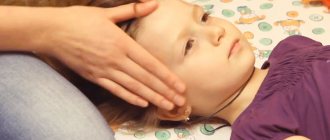
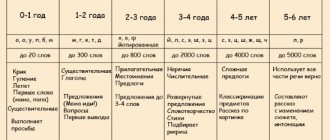
![Visual and didactic manual on sound automation [C] “Interesting cards”](https://doktorobrubov.ru/wp-content/uploads/naglyadno-didakticheskoe-posobie-po-avtomatizacii-zvuka-s-interesnye-kartochki-330x140.jpg)


